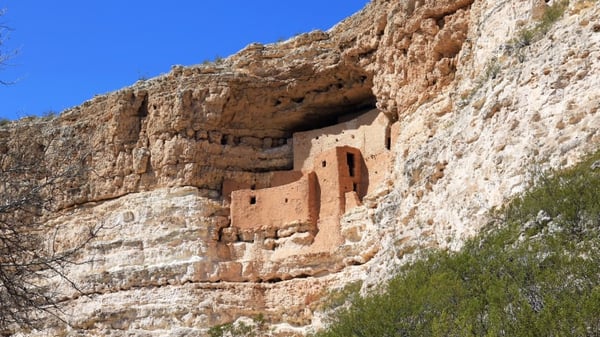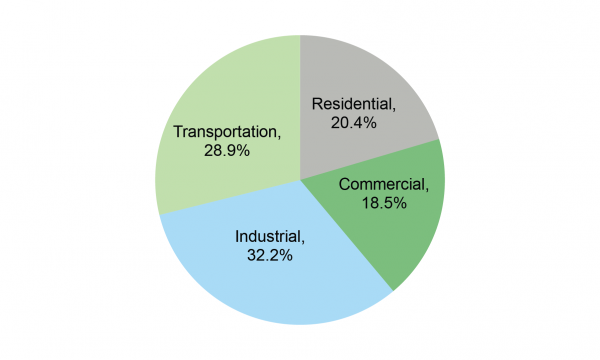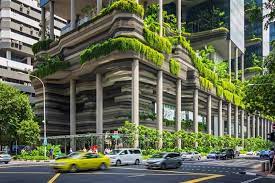Courtesy : learn.g2.com
Green architecture
There have been many different reactions around the world to the scientific findings that Earth, as we know it, is endangered. In the architecture industry, the response has been the growth of green architecture.
What is green architecture?
Green architecture is a philosophy that advocates for building with the environment in mind by using sustainable sources of energy, designing efficiently to reduce energy use, and updating existing buildings with new technology.
Green architecture counteracts the impact of humankind by creating more sustainable ways for us to live on this planet. This type of architecture does not mean abandoning all the creature comforts we enjoy in the 21st century. It means embracing new technologies that have become more and more accessible.
Green architecture
In the 1970s, innovations like trombe wall, using large overhangs to shade interior spaces, and indirect passive heating were seen as revolutionary, but now they are common practice and taught in many accredited architecture programs. This means architects are more equipped than ever before to design efficient buildings that require less energy over the course of their life to operate and are constructed in more sustainable ways.
Green architecture may sound new, but it has always been among us. Historically, it was necessary for survival. Easy examples of this are cracking windows to catch a breeze to cool off interior spaces in the summer, or building structures that capitalize on collecting natural light.
Green architecture can date back to ancient civilizations that adapted to live in extreme climates. The Montezuma Castle, a remote desert cliff dwelling between Phoenix and Flagstaff, Arizona, is one example.
 Source: History.com
Source: History.com
On the other side of the world, traditional Arabic architecture dating back to 2000 BC features a courtyard and high tower to act as a wind crater for natural ventilation. These examples of green architecture utilize passive design to control interior climate.
However, with the advent of electricity, building technology, increase in population and urban sprawl, these lessons we learned long ago have remained largely ignored as we now simply click a switch for more light, or turn off a thermostat for temperature control. We have negated millenniums of building advancement. But with more thought given at the design stage, architects can create buildings that consume less energy and are more desirable to live in.
Energy consumption by the numbers
Despite all the attention given to electric cars and reducing consumption of fossil fuels in our vehicles, the largest consumer of energy might surprise you: buildings.
Currently 20.4 percent of all the United States’ energy consumption is used in residential buildings, and 18.5 percent is used in commercial buildings like the offices where we work, coffee shops, restaurants, and stores. That combined 38.9 percent of all energy directly consumed by buildings dwarfs the 28.9 percent of energy Americans use on transportation.

Source: University of Michigan, Center for Sustainable Systems
How do buildings consume energy? Energy is spent by heating and cooling them, warming water, lighting spaces, and a host of other functions.
All told we use a tremendous proportion of energy; the average energy consumption of buildings in the United States is more than our European counterparts. The United States’ 327 million inhabitants make up 5 percent of the world’s population, but we use 15 percent of the world’s energy, whereas the European Union, with 7 percent of the world’s population, consumes 14 percent of the total energy generated. So the United States consumes three times its population and the European Union consumes double its population.
Buildings are definitely part of the problem. But should we abandon our beloved buildings to go live in the woods and revert to civilization of the past? Absolutely not. By embracing new technologies, which we as a civilization have done for centuries, we can drastically reduce our need for energy.
Green design today
Imagine the life cycle of products in your everyday life, For instance, say you purchase a single-use water bottle to take to the gym and then dispose of – hopefully in the recycling bin. This product took energy to make, to ship to you, and was only in use for an hour.
Let’s apply this to a building. Skyscrapers use steel that is manufactured in an energy intensive process, then shipped via trains or trucks to the construction site where it ultimately becomes part of a building that will occupy the site for decades to come. All the energy used in production, transportation, and construction of that steel is counted as “embodied energy.”
One way to think about green architecture is reducing the embodied energy of a building. Any licensed architect can assist clients in sourcing materials that are less labor intensive to construct and require less transportation. It’s easy to specify windows from Germany, but when a product manufactured in North America can cut out transportation, why not choose something more local?
Another way to minimize embodied energy during building creation is by using materials that have been recycled, like steel or reclaimed wood. This gives new construction a smaller footprint opposed to those buildings that require entirely new materials to be fabricated.





